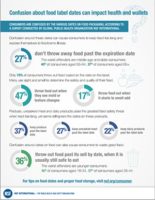The widespread production of genetically modified (GM) crops worldwide has caused a sharp increase in the number of incidents where low levels of genetically modified organisms (GMOs) have been found in food and feedstuffs traded between nations, causing disruption to trade.
These are the findings of a new survey by the United Nations Food and Agriculture Organization (FAO). Participants from 75 countries were queried by the FAO concerning low levels of GM crops in the global food and animal feed trades. Between 2002 and 2012, 198 such incidents were reported, with the FAO reporting a “steep acceleration” after 2009. Between 2009 and 2012, 138 out of the 198 total incidents were reported.
Difficulties are caused by some countries working on the basis that shipments of food and foodstuffs are unacceptable if GMOs are found at a level where detection is possible, that is, “trace” levels. Other countries make decisions based on the acceptable level of GMOs for a particular commodity. The position is further complicated since what’s an acceptable level of GMOs in the country of export may differ from that permitted in the importing country.
There is no international agreement defining universal, acceptable, low-level GMOs entering the food chain.
The survey revealed that the highest number of incidents involved linseed, rice, maize and papaya. When unacceptable levels of GMOs are found in shipments, they are usually destroyed or returned to sender.
“The incidents have led to trade disruptions between countries with shipments of grain, cereal and other crops being blocked by importing countries and destroyed or returned to the country of origin,” said the FAO in a news release.
Suggesting that the survey uncovered what may be a growing problem globally Renata Clarke, FAO Senior Food Safety Officer in charge of the survey, noted “We were surprised to see incidents from every region. It seems the more testing and more monitoring they do, the more incidents they find.”
The survey found that some countries do not even have the capacity to test for GMO content. Out of the 75 countries surveyed, 35 reported having little or no capacity to detect GMOs. The laboratories, technical expertise and equipment were simply absent.
The survey results suggest that some countries need help in assessing whether GMO crops are safe to eat. The FAO has thus established the web-based GMO Foods Platform for the specific purpose of sharing data on safety assessments.




